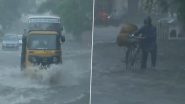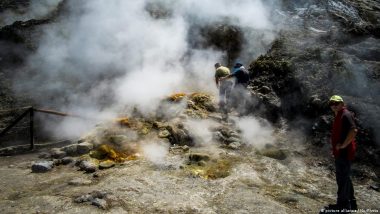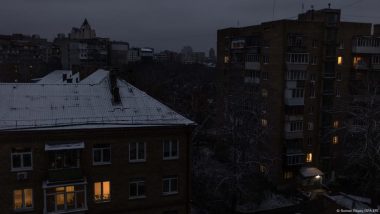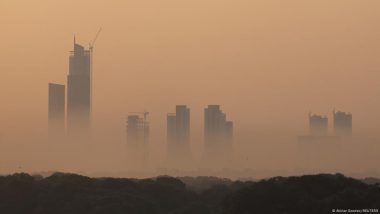A slew of recent earthquakes in a volcanic zone has raised fear of evacuation in the Italian city of Naples.An earthquake with a magnitude of 4.2 struck Naples on the morning of Wednesday, October 4, 2023. It was the strongest jolt experienced by the volcanic area, known as the Campi Flegrei or Phlegraean Fields, in more than four decades. The name of the area originates from the Greek word for burning.
Also Read | Annular Eclipse 2023: Indian-Origin NASA Scientist To Lead Rocket Mission Into Solar Eclipse on October 14.
It is one of many, but the strongest of the small earthquakes that has rocked the region recently. Both experts and the public fear that these tremors could cause a "super volcano" to erupt and force people into mass evacuation. Many residents in the region have already prepared an emergency bag in case a need arises for sudden evacuation.
What are the Campi Flegrei?
The Campi Flegrei are a depressed volcanic area, formed as a result of repeated explosive eruptions. One of them, an outburst 40,000 years ago, was one of the most powerful catastrophes in the world, affecting global climate. This might have led to the extinction of the Neanderthal, some researchers say. Magma from that blast has been found in Greenland, some 4,500 km away.
Across the Bay of Naples from the Campi Flegrei sits Pompeii, a key tourist attraction in southern Italy, known for preserving the ruins of volcanic calamities. In Pompeii, thousands were killed in an eruption of Mount Vesuvius in 79 AD. The volcano most recently erupted in 1538.
The Campi Flegrei are home to a much bigger volcano than Vesuvius ― it's dubbed a 'super volcano' by many. Sometimes the volcano is called the "next Vesuvius", as it is unlikely to get its own name until it actually erupts. While experts have not spotted a volcanic cone in the ground through which lava would flow out, if the volcano erupts with full power, it could kill millions and destroy entire towns.
The geological history of the caldera, the cauldron left behind when the magma empties out after an eruption, reveals that over the past 15,000 years, it has undergone more than 70 eruptions, forming volcanic edifices, craters and lakes, such as Astroni, Solfatara and the lake of Averno.
Why is there fear of volcanic eruption now?
The volcanic region near Naples sprawls across some 180 square kilometers (almost 70 square miles), and the epicenter of the recent earthquakes falls in the Campi Flegrei region.
While thousands of small tremors have been felt in the region since 2019, both their frequency and intensity have increased this year. This has raised suspicions on whether the volcano brewing below the surface is about to erupt in the near future.
The Italian government's Department of Civil Protection has warned that seismic activity is more pressing of an issue than a volcanic eruption right now, and that more quakes could follow. On their social media channels, they have recorded that the recent tremors did not cause any major damage. Further, they have asked local authorities to inspect buildings for damages to identify weakness in the event of more tremors in the future.
Experts suggest that the threat of volcanic activity comes from a geological phenomenon called bradyseism that is common in the region. It is the vertical ascent of soil due to pressure from the magma below.
In the early 1980s, a similar increase in tremors was felt in the region without it leading to a volcanic eruption.
While Italy's National Institute for Geophysics and Volcanology (INGV) has issued a warning that more earthquakes can be expected in the coming days, no proof of rising magma has been observed so far.
What could happen during an eruption?
The Campi Flegrei region has always manifested itself mainly through explosive eruptions. If that happens again, we may see the formation of a tall eruptive column made out of gas, lava bits and ashes. This could lead to fall-out of volcanic materials raining down on nearby regions. The debris can fly for many kilometers ― remember the extreme example of Greenland!
During an eruption, the volcano could spew out a pyroclastic flow, which is characterized by an avalanche of gases, ash and volcanic fragments moving at high temperatures and speeds.
If the eruption is strong enough, it could affect global temperatures and climate, and could potentially lead to a much warmer winter in the northern hemisphere.
Edited by: Carla Bleiker
(The above story first appeared on LatestLY on Oct 05, 2023 09:00 PM IST. For more news and updates on politics, world, sports, entertainment and lifestyle, log on to our website latestly.com).













 Quickly
Quickly





















